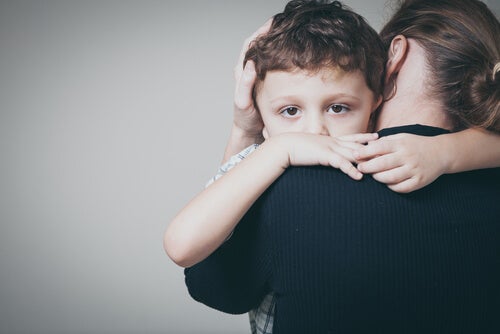Does Your Attachment Style in Childhood Influence Your Romantic Relationships?

Attachment style during childhood is a variable that plays a crucial role in the establishment of healthy and balanced romantic relationships in adulthood. More couples therapists than ever are coming around to the idea that your childhood attachment style has a major influence on your attachment style as an adult.
John Bowlby’s attachment theory defines attachment as the emotional connections you create with the people around you throughout your life. First, you create them with your parents during childhood. Later, with other figures such as siblings, extended family, friends, and partners. The emotional connection that you create with your caretakers has a direct impact on how safe and protected you feel.
The level of safety and confidence that you perceive from your parents determines your childhood attachment style. At the same time, that same attachment style can influence the type of romantic relationships you establish as an adult.
Let’s look at the different types of attachment and how they influence romantic relationships.

The secure attachment style in childhood: trusting and positive relationships
Security and trust form the foundation of the secure attachment style in childhood. Our caregivers are the ones who inspire those feelings.
In the secure attachment style, parents understand the emotional needs of their children and respond to those needs. This dynamic makes young ones feel loved and protected. It’s a secure environment where they can express their feelings since there’s a climate of trust. They can be themselves without fear of rejection.
If the attachment figures encourage these two basic characteristics (security and confidence), they’ll raise a child who’s confident and trusting of others. Their child will also have the ability to regulate their emotions and develop good social habits. This is how Rafael Guerrero, psychologist and director of Darwin Psychology Services, puts it:
“It’s likely that those who received a secure attachment in their childhood will have healthier and more balanced romantic relationships.”
It’ll be more likely that they’ll trust their partner, avoiding dependence problems. Also, it’ll be easier for them to communicate well and identify each other’s needs.
Avoidant attachment style: insecure and distant relationships
Children with this style of attachment have suffered rejection from their parents and their needs haven’t been sufficiently attended to.
Because their caretakers weren’t available, their relationships with the parents showed emotional distance and a lack of availability. They weren’t there to support or help them when they needed it.
- They have learned to avoid emotional contact and intimacy with others. This is a result of having learned they can’t count on their attachment figures.
- They have trouble expressing their emotions because they fear they might experience rejection or indifference. This is because they suffered in the same way at the hands of their reference figures.
- They wind up forming a kind of invisible shield, building an apparent autonomy based on a set of learned strategies. These strategies were learned out of fear of rejection.
Romantic relationships with an avoidant attachment style tend to be distant since one person feels they can’t really trust the other. They avoid emotional connection because of anxiety and fear regarding their partner and themselves. In addition to this, it’s very hard for them to ask for or accept help from others.

Avoidant attachment: unstable and dependent relationships
In avoidant attachment, children have unstable parents. They sometimes reject the children without any kind of consistency in their motives.
This type of insecurity causes children with this style to not want to explore the world because they don’t know if their demands will be met if they ask for help.
People with this attachment style are very likely to develop emotional dependence, and they learn to live with fear and insecurity in relationships. They tend to have a negative self-image, low self-esteem, and a low sense of control over what happens.
They’re afraid of abandonment and demand a lot of attention. They need others to constantly show their love.
In conclusion, this explains the link between attachment styles and romantic relationships. The relationships you established with the first main figures in childhood seems to influence the type of partner you choose later in life. It also influences the types of relationships you establish and the quality of connection you have with those closest to you.
This text is provided for informational purposes only and does not replace consultation with a professional. If in doubt, consult your specialist.








